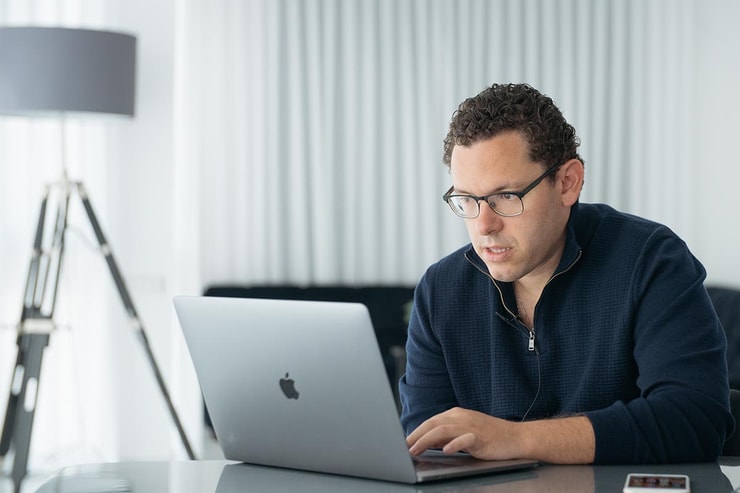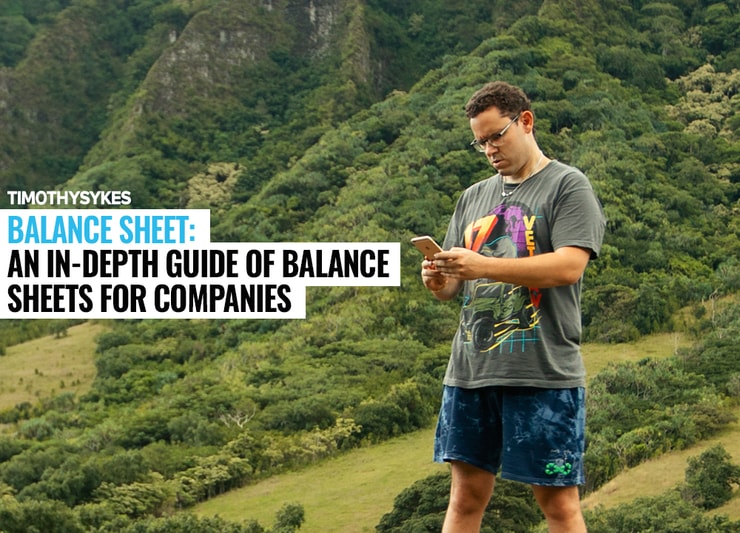Some people love poring over financial documents. Others hate it. No matter which camp you side with, you should know how to read a balance sheet.
No, it’s not a sexy topic, but it will make you a better investor. If nothing else, you’ll gain insight into how businesses work and what their financial situations look like in comparison to one another.
You might even want to learn how to create a balance sheet of your own. It’s good practice. Let’s take a deep dive into this topic so you’re prepared when someone pushes a balance sheet under your nose.
Table of Contents
What is a Balance Sheet?

2025 Millionaire Media, LLCA balance sheet is a financial document that details a company’s or entity’s assets, liabilities, and equity held by shareholders. It’s issued on a specific date and provides an at-a-glance look at how a business is fairing at the time.
It’s called a balance sheet because it brings into balance what a company owes and how it’s getting the money. You have liabilities on one side of the equation and assets and shareholders’ equity on the other.
It makes sense when you think about it. If a company buys something or takes out a loan (liability), it must either pay for it with owned assets or with money from shareholders.
The Importance of Balance Sheets
At their most basic, balance sheets reflect a company’s financial health. For instance, if there are more liabilities than assets and equity, the business might be in trouble; it can’t cover its debts.
However, a single balance sheet doesn’t tell the whole story. It’s a single frame of an ongoing movie. You have to look at previous balance sheets to identify financial trends and at other balance sheets from companies in the same industry so you can better understand how that sector operates financially.
What Exactly Does a Balance Sheet Show?
Every balance sheet is unique in that it provides information about liabilities, equity, and assets based on its purpose. For instance, a balance sheet prepared for stock market investors might contain different information than one prepared for a board meeting.
Assets are things that a company owns or monies its owed. For instance, a business might have assets like office equipment and real property. The balance sheet reflects those assets.
Liabilities are things that a company owes. When a business take out a loan or has outstanding accounts payable, those items appear under liabilities.
Then you have equity, which can include common stock, preferred stock, non-equity reserves, and more.
The specific line items on a balance sheet can vary widely. You can even create a balance sheet for your family budget to show how much debt you owe, how much money you’re bringing in, and how much cash you have in savings. It’s the same concept.
Tips on How to Understand Balance Sheets
Reading balance sheets can prove confusing, especially if you don’t know what specific terms mean.
For instance, some balance sheets separate current assets from long-term assets. A current asset is something you have on hand or will soon in the form of cash, such as accounts receivable and inventory, while long-term assets might include equipment, investments, and vehicles. Their value changes over time (depreciates) or won’t be paid out until some point in the future.
In many cases, assets appear on one side of the balance sheet, while liabilities and equity appear on the other. At the bottom, you’ll see “total liabilities and equity” or “total liabilities and surplus.” This is based on the balance sheet equation, which I’ll cover a little later.
Balance Sheet Items
As mentioned above, line items on a balance sheet vary greatly. You might just see a few lines for each category, or the balance sheet could be several pages long.
However, most companies want to distill their balance sheets down to their most basic forms.
If a company uses a standard template for a balance sheet, some items might not have values. For instance, when a business doesn’t have any inventory, it can’t place a value in that balance sheet line item.
Keep in mind that the balance sheet doesn’t always tell the whole story. Let’s say a business reports $10,000 in loans on the asset side of the sheet. The asset lies in the interest on that loan, but if the borrower isn’t paying on the loan, it’s actually not an asset.
Examples of Key Items
Some of the most common items you’ll see on the asset side of a balance sheet include the following:
- Cash: The amount of liquid capital available on hand
- Inventory: The value of merchandise inventory
- Short-term receivables: Also called accounts receivable, the amount of money owed to the company within one year or less
- Intangible assets: Assets that aren’t physical, such as brand equity and intellectual property
- Property: Physical assets, such as real estate, vehicles, and equipment
Then you have the liabilities side, which might include these key items:
- Short-term debt: Debt that will be paid back within one year or less
- Long-term debt: Debt that the company will pay back over a longer period of time
- Accounts payable: Monies owed to employees, vendors, and others
- Taxes: Payable income and sales tax
- Accrued expenses: Incremental or regular debt owed by the company, such as rent
The equity part of a balance sheet is pretty straightforward. It might divide the equity into different types, such as common equity and shareholders’ equity, or it might combine everything together.
More Breaking News
- RYTM Stocks in Spotlight: What’s Next?
- BBAI Faces Legal Storm: Stock Fluctuation Insights
- Futu Holdings’ Surprising Stock Surge
Balance Sheet Order
The order of a balance sheet can vary widely. There’s no standard for how a business must record its assets and liabilities.
In general, assets appear on the left side of the balance sheet, and equity and liabilities appear on the right. This reflects the ideal of balancing those two sides of the equation.
The asset column might list items based on how quickly the business could convert those assets into cash. That’s why “cash” usually appears at the top. Lower down the list, you’ll see items like vehicles and real property, which take more time to liquidate.
Similarly, liabilities often appear in order by their due dates, with the nearest due date appearing first. This is somewhat fungible, as accounts payable might have varying due dates. The company can decide to break those down into further categories if it wishes.
The more balance sheets you read, the more comfortable you get. Eventually, it’ll become no more complex than reading the nutrition label on a frozen dinner.
Balance Sheet Liabilities
To better understand liabilities, think about your own financial health.
If you owe $100,000 in credit card debt and have a $400,000 mortgage, you have $500,000 in liabilities. These are monies you owe someone else, and therefore must be paid by a certain date.
The credit card debt is likely due sooner. It’s also advantageous to pay off the credit card debt faster because you’re paying a higher interest rate than on your mortgage.
You also have liabilities like utilities, insurance, food, clothing, and medical care.
Viewed in this way, a balance sheet looks similar to a household budget. Businesses report liabilities based on what they owe.
Current Liabilities Accounts
As mentioned above, current liabilities — also called short-term liabilities — are due and payable within a year or less. The company must satisfy those liabilities quickly to remain in good standing.
Payroll is a good example of a current liability. The company must pay its employees to remain in business. The same goes for recurring liabilities like rent on a commercial space, utilities, insurance, and taxes.
Long-Term Liabilities
Long-term debts are often listed separately because they take longer than one year to pay off. These are things like long-term loans, deferred tax payments, and debentures.
Importance of Assets and Liabilities
Assets and liabilities make up the function of a business. Companies need assets to maintain profitability, but they also need liabilities so they can expand, grow, and cover expenses when liquid capital proves scarce.
However, an imbalance between assets and liabilities — particularly when liabilities exceed assets — might suggest problems with the business model, cash flow, and other factors.
Let’s say that you want to invest in a business. Maybe you’re going to issue a cash investment or buy several shares of stock.
By looking at the balance sheet as well as other financial documents, you can determine whether your investment is likely to pay off. Maybe the business already has considerable debt or has tons of outstanding shares. You’d make your decision accordingly.
Other Tips to Help You Compile a Balance Sheet

2025 Millionaire Media, LLCMany people ask me why liabilities and equity share the same side on the balance sheet. There’s a good way to remember this.
Liabilities represent third-party claims on the business. If the company borrows money from the bank, the money owed on the loan represents a liability.
Equity, meanwhile, represents shareholder claims on the business. People don’t invest in companies out of generosity — they want a return on their investment. For instance, if you buy 1,000 shares of stock in Company XYZ for $10 per share, you want to sell those 1,000 shares when the stock price climbs above $10.
On the business side of the equation, the company owes money to shareholders via dividends and other means. That’s why it shares the same side as the liabilities on the balance sheet.
Balance Sheets Formula
As the name implies, balance sheets must always balance out. In other words, the totals at the end of each side of the sheet must cancel out to zero. If it doesn’t, you might have errors in your ledger or other issues related to reporting.
This is because every business has equity, but it’s not always positive equity. If a company has more liabilities than assets, it has negative equity. Still, the equity portion of the balance sheet on the liability side will balance out the sheet to zero.
But doesn’t that mean the company is going out of business?
Not necessarily. A company can remain stable in a negative equity position as long as it’s able to cash out its assets in sufficient time to cover its liabilities.
Let’s say the company has negative equity with $10,000 in excess liabilities. The business could sell a vehicle owned by the company for $12,000. That brings the company back to positive equity and allows it to cover the $10,000 in liabilities.
It’s easy to calculate a balance sheet based on the accounting formula. Assets equal liabilities plus shareholders’ equity.
That’s how you zero out a balance sheet. As long as the numbers equal one another, the sheet is balanced.
Balance Sheet Example
If you want to see a current balance sheet in action, you can visit Investopedia to view Amazon’s (and other companies’) balance sheets and other financial statements. It’s highly informative if you’re thinking about making investment decisions based on balance sheets.
Income Statement and Balance Sheet
Investopedia also highlights Amazon’s income statement. An income statement is similar to a balance sheet except that it reveals profits and losses over a specific period of time rather than in one instant. It takes into account both operating and non-operating costs.
In Which Situations Can Balance Sheets Be Used?

2025 Millionaire Media, LLCYou can find uses for balance sheets in many situations, especially if you’re thinking about investing in a business.
Here are some of the most common situations in which you might want to see a company’ balance sheet.
Financial Management Balance Sheet
A financial management balance sheet demonstrates how well a company handles its finances. Does it balance assets and liabilities responsibly? Can it cover its debts?
Rental Property Balance Sheet
Maybe you’re thinking about buying a rental property to produce income. A rental property balance sheet would show income and assets the previous owner has at the current moment, which can tell you how profitable the property might become if you were to purchase it.
The Bottom Line
Whether you’re a business owner, accountant, or investor, you’ll likely spend lots of time staring at balance sheets. They’re not as useful for pennystocking (most companies don’t even provide them since they’re not regulated by the SEC), but they’re essential if you’re investing in more expensive stocks.
Do you have any questions about how a balance sheet works?








Leave a reply